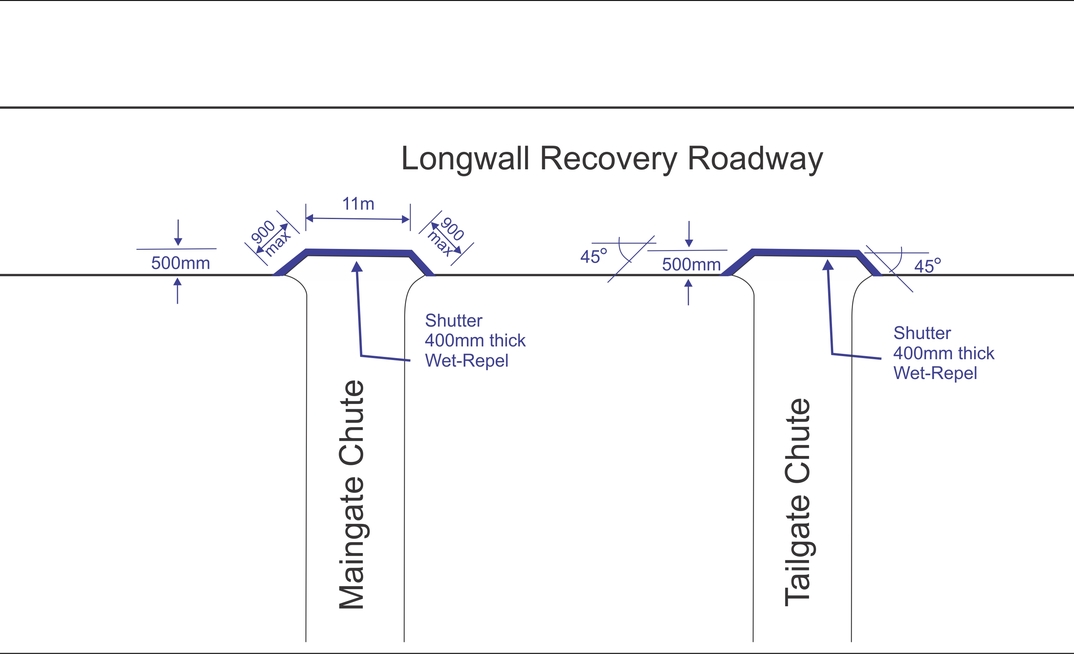Recently the company played a pivotal role in the design and backfill of a longwall take-off roadway, developed by an Australian underground coal mine.
Aquacrete business development manager Greg Kay said the project involved the construction of a roadway across the longwall and considerable engineering across a number of project phases.
After the roadway was driven and extra support was in place, the project team set about constructing a series of shutters designed to retain a fly ash/cement fill that would be introduced to the drive.
Each shutter was designed to withstand 150-180 kilopascals of pressure and a vertical head of 5m.
Two of the shutters were designed with a 400mm angle in them to resemble a bay window.
The construction material also needed to be carefully considered as the shutters would be cut into the longwall in the maingate and tailgate take-off chute roadways.
Kay said the method to construct an Aquacrete seal meant there was no mesh or other materials that would impact on the longwall as it cut through.
“As more than 5000 cubic metres of fly ash/cement was to be pumped into the drive, we needed a product that could achieve a high factor of safety without the need for significant support in the construction,” he said
The solution was a set of four Aquacrete Wet-Repel shutters as large as 7m wide by 3.5m high that were each sprayed to 300-400mm thick.
To allow the project team to inspect the progress of the fill, manholes and thickness gauges were installed at construction.
The success of the project would only be realised when the recovery roads were reached by the longwall and there was eager anticipation of this, according to Kay.
“The result was an extremely successful take-off with the biggest learning being that the stringent engineering of this project had certainly contributed to a safe and successful take-off,” he said.
The project was particularly exciting for Aquacrete as it was the first time that seals had been designed in a bay window configuration, Kay said.
“Our engineers had a lot to consider in establishing the design parameters for the seals, as the shape of the seals had the potential to affect the strength and capability of the seal,” he said.
“It is fantastic to see our products used in applications where mines understand that our products are designed first and foremost to enhance underground safety while optimising productivity.
“In this instance, Wet-Repel was a great solution.”
























